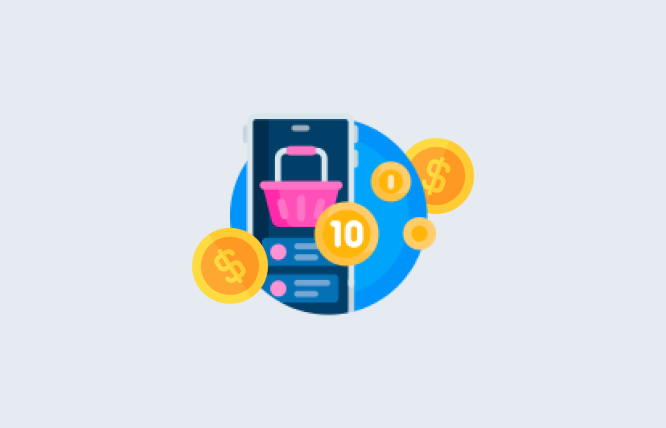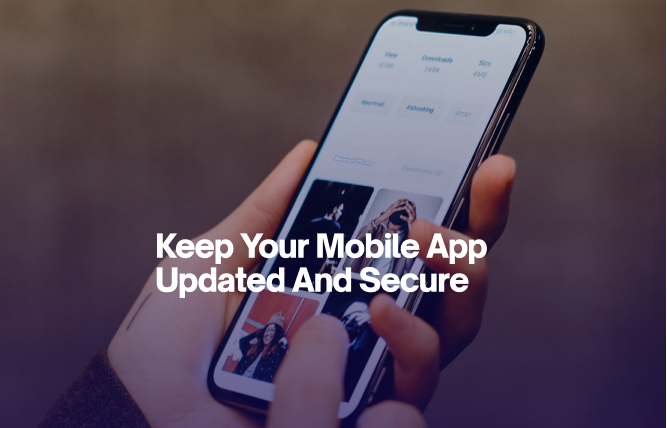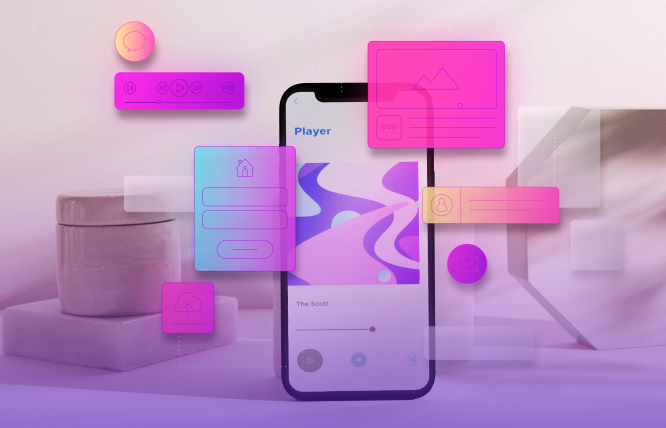In 2025, everything will be digital, from buying and selling to managing and updating data. So, to keep up with the pace, you need to upgrade to an e-commerce mobile app or build one from scratch. But how?
Simply provide value to your customers through a modern E-commerce app. But between all the features and functionality, figuring out how much does it cost to develop an E-commerce app can be difficult. In this article, we’ll break down how much it costs to develop an e-commerce app or a hybrid e commerce app, along with all the expenses involved in building an e-commerce app.
See what your app could cost — and start building today!
Average Cost of E-commerce App Development in 2025
Unlike a one-size-fits-all answer, the price tag for your e-commerce app depends on several key factors. Here’s a breakdown to help you navigate the pricing landscape in 2025:
Features and Platform Dictate Cost
The feature set of your app significantly impacts the development cost. A basic app with functionalities like product browsing, shopping carts, and secure checkout will naturally be more affordable than one overflowing with advanced features.
Here’s a breakdown of how much does it cost to develop an E-commerce app :
Simple App (Think Essentials): $20,000 – $50,000. This range covers apps with core functionalities like product listings, clear descriptions, and secure payment options.
Medium Complexity App (Adding Value): $40,000 – $100,000+. This range includes features like user accounts, wishlists, order tracking, and basic push notifications.
Here are the three main options, each with its own cost considerations:

Native Apps (Dedicated Apps for iOS and Android): This offers the best performance and user experience but is the most expensive option due to the need for separate development teams for each platform.
Hybrid Apps (Single Codebase for Both Platforms): The cost-effective solution, hybrid apps offer good functionality but may have limitations in customisation and performance compared to native apps.
Mobile Web Apps (Accessed Through a Browser): These are the most budget-friendly option but may offer a less engaging user experience compared to native or hybrid apps.
How Much Does it Cost to Develop an E-Commerce App – Factors or Components Development Cost
Now that you’ve got a good idea of the E-commerce app features you need let’s talk about what affects the price tag.
The formula is simple: The more complex the design, the more it’ll cost.
A minimalistic app with simple/basic features will be way more budget-friendly than one with all the bells and whistles, like fancy AR features or integrating with social media.
The platform you choose also affects the cost of the e-commerce app. There are three main options:
- Native apps (separate apps for iPhone and Android)
- Hybrid apps (one codebase for both)
- Progressive Web apps or Mobile web development (accessed through a browser).
Each has its pros and cons in terms of cost and functionality. Then there’s the development team itself. The rates for developers can vary depending on where they’re located and their experience.
A team in North America or Western Europe will typically cost more than one in Asia or Eastern Europe.
Finally, a well-designed app with a user-friendly interface not only looks good but also makes shopping on your app simple, which can lead to more sales.
So, investing in a strong UI/UX design is definitely worth considering, but it can also impact the development cost.
Calculate your app development cost & talk to experts!
Strategies for Saving Money on E-commerce App Development
Building a successful hybrid e commerce app doesn’t have to cost a fortune. Here are some straightforward tips to keep your custom mobile app development costs in check:
Launch with a Minimum Viable Product (MVP)
Think of your MVP as a test run. Develop a basic version of your app with just the essential features like product browsing, shopping cart, and secure checkout.
Tip: Get real people to try your MVP and see what they love (and what they don’t). This helps you focus on features that matter most to your customers.
Focus on What Matters Most
Don’t try to do everything at once! Make a list of desired features, then rank them based on importance and how they’ll benefit your customers. Build the core features first, then use feedback to decide what to add next.
Tip: Focus on features that directly impact sales and user experience first.
Go Hybrid: Reach More with Less
Hybrid apps are essentially a combination of iOS and Android app development. Hybrid app development is a cost-effective way to create an app that works on both iPhones and Android devices. They use one codebase for both platforms, saving you money and time to market.
Tip: While hybrid apps are great, they might not be perfect for every feature. Do your research to see if hybrid mobile app development meets your needs.
Find the Right Tech Partner
Creating your own in-house app development team can be expensive and requires multiple resources. Therefore, consider outsourcing to a skilled company with experience in e-commerce apps. Go with companies like FuturByte that use cost-effective solutions like Flutter development.
Tip: Do your research! Find a company with a good reputation and experience building apps similar to yours.
Leverage Free Tools and Libraries
There are many free tools and resources available for building e-commerce apps. Using these can help reduce development costs compared to building everything from scratch.
Tip: Not all free tools are created equal! Make sure any tools you use are reliable and well-maintained.
Keep it Simple and User-Friendly
A beautiful app is great, but it doesn’t have to be overly complex. Consider using pre-built design templates specifically made for e-commerce apps. These can streamline the design process and save on costs.
Tip: Focus on a clean layout and easy navigation. Your customers should be able to find what they need quickly and easily.
Factor in Maintenance Costs
Don’t forget that development is just the beginning. Ongoing maintenance is needed to keep your app running smoothly and securely. Factor in these costs when planning your budget.
Tip: Think of maintenance like taking care of your car. Regular check-ups keep things running smoothly and prevent future problems.
How to Allocate Your Budget for E-commerce App Development
Now that you have a better idea of the cost and saving strategies let’s explore how to allocate your budget effectively:
- Development: This is the biggest chunk, covering the actual coding and building of your app.
- Design: Invest in a strong UI/UX design for a user-friendly experience.
- Project Management: Ensure smooth sailing with proper project management.
- Testing and Maintenance: Rigorous testing ensures a bug-free app, and maintenance keeps it running smoothly.
- App Store Fees: Factor in any fees required to publish your E-commerce app on the Google Play or App Store.
You can create an affordable e-commerce mobile application that attracts clients and boosts sales by being aware of these cost considerations and using clever ways to save money.
Start Developing Your E-Commerce App with FuturByte!E-commerce App Development Cost Comparison
| Android App | iOS App | PWA (Progressive Web App) | Cross-Platform App | |
| Development Cost | Moderate | Moderate | Low | Moderate |
| Cost Range | $20,000 – $100,000+ | $20,000 – $100,000+ | $10,000 – $50,000+ | $25,000 – $75,000+ |
| Breakdown |
Native development for Android platform May require additional features for Android-specific user preferences |
Native development for iOS platform May require additional features for iOS-specific user preferences |
Uses web technologies (HTML, CSS, JavaScript) Can leverage existing web development expertise |
Uses frameworks like React Native or Flutter for single codebase development across platforms |
| Factors Affecting Cost |
App complexity Development team location UI/UX design complexity |
App complexity Development team location UI/UX design complexity |
App complexity Development team location UI/UX design complexity |
App complexity Framework expertise UI/UX design complexity |
| Disadvantages | Higher development cost compared to PWA or cross-platform apps | Higher development cost compared to PWA or cross-platform apps |
May have limitations in accessing some native device features compared to native apps Potential performance drawbacks compared to native apps |
|
| Ideal For |
E-commerce businesses requiring full access to native features and top-tier user experience Businesses with a dedicated Android user base |
E-commerce businesses requiring full access to native features and top-tier user experience Businesses with a dedicated iOS user base |
Businesses with budget constraints E-commerce businesses prioritising fast time-to-market Businesses targeting users across both iOS and Android platforms |
Businesses with budget constraints E-commerce businesses looking for a single codebase solution for both platforms |
Try Our App Development Cost Calculator Now!
How to Pick the Right E-commerce App Development Partner
Building a successful e-commerce app requires a skilled development team on your side. But with so many companies out there, how do you find the perfect match?
Here’s a guide to help you navigate the selection process:
1: Define Your Needs
Have a clear understanding of your vision. What features are essential for your app? What platform(s) do you want to target (iOS, Android, or both)?
A well-defined plan attracts companies with the right skill set for your project.
2: Research and Compare
Look for companies with experience in e-commerce app development. Check their portfolio to see if they’ve built apps similar to yours. Read client testimonials and reviews to get a sense of their reputation and work ethic.
3: Communication is Key
Choose a company that values clear communication. During the initial consultation, assess their ability to understand your vision and translate it into technical terms. Do they ask insightful questions and offer suggestions that align with your goals?
4: Expertise Matters
Look for a company with a team that possesses the necessary technical expertise for your project. This includes experience with e-commerce functionalities, chosen development platform(s), and UI/UX design.
5: Cost Transparency
Get quotes from several companies and compare them. While cost is important, don’t solely focus on the cheapest option. Look for a balance between budget and the company’s experience and capabilities.
Don’t wait until your competitors launch theirs. Start building your e-commerce app now!
FuturByte is the best overall e-commerce development company that can help you build your e-commerce app within a specified time and budget.
How Much Does Mobile App Development Companies Charge for An E-commerce App?
Mobile app development companies charge for an e-commerce app based on the platform and its complexities. For instance:
– Separate Codebases
Each platform requires its own unique codebase, essentially doubling the development workload compared to a single codebase solution like hybrid apps.
– Platform-Specific Expertise
Developers need specialised skills for each platform (Swift or Kotlin for
Apple ios app development and Android OS, respectively), potentially requiring hiring separate development teams.
Moreover, a well-designed app with a user-friendly interface (UI) and user experience (UX) is an investment, but it pays off in the long run.
Try Our App Development Cost Calculator & Know the Costs Before Development!
However, creating a visually appealing and intuitive interface adds to the development budget. This includes:
– UI/UX Design
The time and expertise required to craft a user-centric design experience translates to additional costs.
– Prototyping
Building interactive prototypes to test and refine the design adds to the development timeline and budget.
While development forms the core expense, there are other cost considerations:
– Project Management
Project management is much needed to keep your app highly-efficient, which comes at a cost.
– Server-side Development
E-commerce apps require a strong backend infrastructure to handle data storage, user accounts, and payment processing.
– App Store Fees
To publish your E-commerce app on the App Store or Google Play Store, you’ll need to pay for listing and in-app purchases.
– Ongoing Maintenance
Keeping your app secure, fixing bugs, and adding new features requires ongoing maintenance, which translates to additional costs.
Build smart, spend less. Let’s create your e-commerce app the cost-effective way — get in touch now.
Focus on Much-Needed Features of an E-commerce App
Costs come next; firstly, explore the much-needed features of an E-commerce app. I have shortlisted some of the most demanding E-commerce app features that will ensure a smooth user experience and keep customers coming back for more: Product browsing and search
Detailed product pages
High-quality product images, clear descriptions, and customer reviews are essential for building trust and encouraging purchases.
Shopping cart and checkout
A user-friendly shopping cart allows customers to add and remove items, and a secure checkout process with various payment options is vital.
User accounts
Account creation allows users to save their information, track past orders, and manage their wishlists.
Order tracking
The ability to track the progress of their orders keeps customers informed and reduces inquiries.
Push notifications
Send targeted promotions and updates to keep customers engaged with your app.
These are just some of the core features.
Depending on your specific needs, you might also consider integrating features like an automated chatbot, loyalty program, or wish list functionality.
Calculate Your E-Commerce App Cost for Free!
Conclusion
While successful e-commerce app requires a lot of budget, but there are certain budget-friendly options as well. By prioritising features, exploring cost-effective solutions like hybrid apps or Flutter development, and starting with a minimum viable product (MVP), you can build a valuable app that drives sales and grows your business.
Remember, the key is to be smart about your approach, leverage available resources, and focus on the features that matter most to your customers. With careful planning and the right development partner, your e-commerce app dream can become a thriving reality.
Frequently Asked Questions
Prices vary but expect $20,000+ depending on features and complexity.
Yes! Here are some tips: Start with a basic version (MVP) and add features later. Consider a hybrid app that works on both iOS and Android. Look for a developer who uses cost-effective options like Flutter.
Research flutter agencies with experience in e-commerce apps. Check their work, read reviews, and choose one with a good reputation. Consider FuturByte, the renowned app development company.
Native apps (separate for iPhone & Android) offer the best performance but cost more. Hybrid apps use one codebase for both platforms, saving money but may have limitations.
It depends! Consider your target audience. If you’re unsure, a hybrid app might be a good option to reach both.
PWAs are like websites that act like apps. They’re a budget-friendly option but may lack some features of native apps, but considered the best alternative for E-commerce applications.
It depends. Simple apps can take a few months, while complex ones might take a year or more.
Depends, low-cost mobile app development can be worth it! While it may have limitations compared to high-budget apps, it’s a great way to test your app idea, target a specific audience, or launch quickly without a huge investment.
Have questions or feedback?
Get in touch with us and we‘l get back to you and help as soon as we can!




